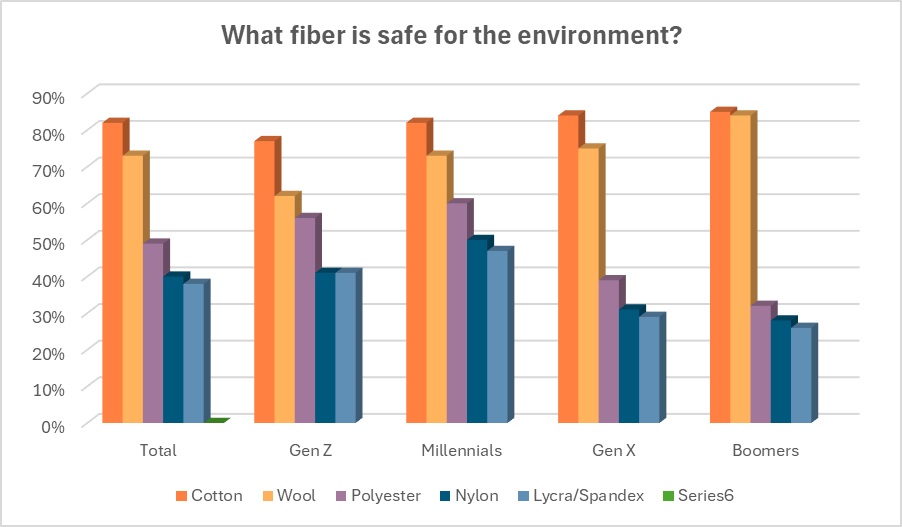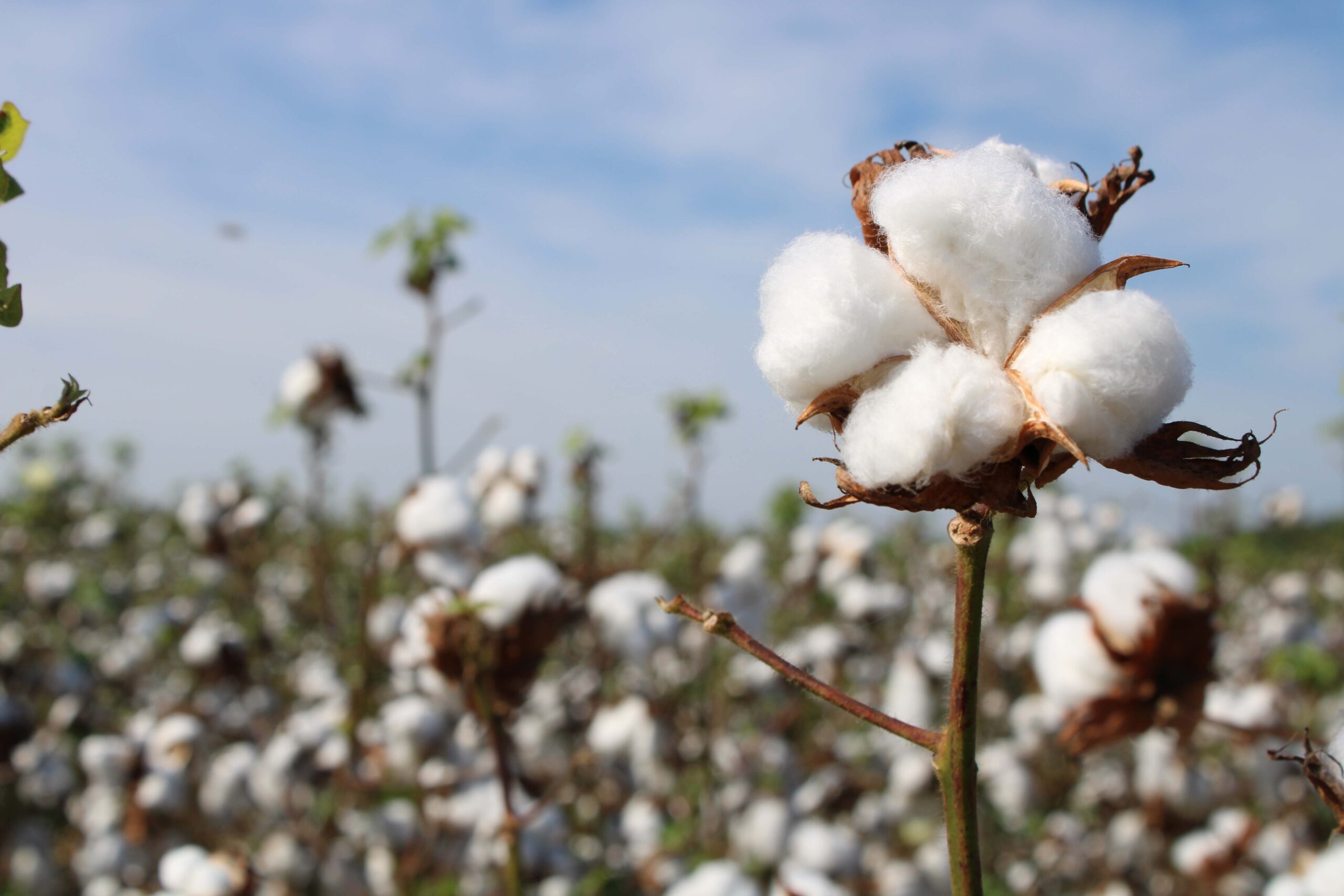Earth Day will be celebrated April 22 and this year the organization behind the movement is focusing on plastics. To be clear, Earthday.org is “demanding a 60 percent reduction in the production of all plastics by 2040, with the ultimate goal of building a plastic-free future for generations to come.” For the fashion industry, that means a call for a reduction in petroleum-based fabrics like polyester.
Earthday.org has fast fashion in its crosshairs because, it says, those makers are responsible for producing more than 100 billion garments every year. And most of their product is made with petroleum-based fabrics like polyester, nylon and acrylic.
Cotton can help brands meet sustainability goals through both circular aspects and improvements in sustainability of production and processing.
Michele Wallace, Director of Sustainability Standards Development, Cotton Incorporated
“Nearly 70 percent of clothing is made from crude oil, resulting in the release of dangerous microfibers when washed and continued contribution to long-term pollution in landfills,” Earthday.org states. “Approximately 85 percent of garments end up in landfills or incinerators, with only 1 percent being recycled. Overproduction and overconsumption have transformed the industry, leading to the disposability of fashion. People now buy 60 percent more clothing than 15 years ago, but each item is kept for only half as long.”
George Washington University’s John J. Forrer, director of the Institute for Corporate Responsibility at the GWU School of Business, said in an interview with the Lifestyle Monitor™ that this is basically a global phenomenon.
“When you look at global trends, you start to see as countries get wealthier, a piece of clothing is worn less often,” Forrer said. “It’s not just the U.S. and not just the EU., but worldwide we’re seeing that. And the thing about fast fashion is once it’s washed three or four times, because of course it’s made very cheaply, it starts to come undone so then people throw it out. It’s all connected. In the food industry, we’ve seen a fair number of company-driven efforts to present products as sustainable to customers, using things like the Rainforest Alliance, Fairtrade International, etc. And people attack some of it as being greenwashed. But I think when you dig into it, there’s a decent amount of effort to try to make those products more sustainable because that’s what people want to buy.”
It makes sense that shoppers would seek more sustainable products, considering that more than three-fourths of consumers (76 percent) say they’re motivated to take sustainable/environmentally friendly actions, according to Cotton Council International and Cotton Incorporated’s 2023 Global Sustainability Survey. This includes recycling cans, bottles and paper (84 percent), reducing waste (84 percent), purchasing energy-efficient appliances (81 percent) and limiting water usage (77 percent).

And when it comes to fabric, consumers consider cotton and cotton blends to be the fabrics they most associate with being sustainable/environmentally friendly (83 percent), according to the 2023 Cotton Incorporated Lifestyle Monitor™ Survey. Consumers also consider cotton to be safest for the environment (82 percent), significantly more than wool (73 percent), polyester (49 percent) and nylon (40 percent), according to the 2023 Global Sustainability Survey. When determining a garment’s sustainability, 40 percent of consumers consider whether or not it’s made with natural fibers (40 percent), followed by a garment’s ability to be recycled (36 percent) and whether it’s made using recycled materials (34 percent).
Whether clothing can be recycled into a new garment or into something else entirely speaks toward its circularity. The Ellen MacArthur Foundation says by moving to a circular system, the fashion industry “can unlock a USD $560 billion economic opportunity.” Realizing this would include using new business models that move away from fast fashion and instead increase clothing use, as well as solutions so used clothes are turned into new products.
Cotton Incorporated’s Michele Wallace, director of sustainability standards development, makes a point of noting circularity and sustainability are words that cannot be used interchangeably. But, she says, circularity is related to sustainable development.
“Cotton can help brands meet sustainability goals through both circular aspects and improvements in sustainability of production and processing,” Wallace says. “Some examples of circular aspects of cotton that extend throughout the entire product life cycle include regeneration of soils within the cotton production phase when tilling less and using cover crops, extension of product life by increasing durability in the use phase using TOUGH COTTON™ finishes, and, at the end of the product life, using programs such as the Blue Jeans Go Green™ [program] to convert denim into insulation or composting cotton products to return raw materials to the biological sphere.”
Wallace also points out improvements have been made by cotton growers that have resulted in significant reductions in energy and water usage. At the same time, she says, water efficiency has increased in manufacturing cotton products. “These are other possible sustainability and circularity benefits for brands using cotton as a raw material,” Wallace states.
The reduction in water usage is often overlooked even within the fashion industry, thanks to myths that persist about cotton, which is actually a drought-tolerant plant. In the U.S., about two-thirds of cotton crops are produced without any irrigation at all, relying instead on natural rainfall. Further, U.S. cotton growers have improved the efficiency of irrigated water usage by approximately 80 percent compared to 20 years ago.
Despite myth-busting regarding cotton’s sustainability and consumer preferences for natural fibers, the fashion industry still relies on petroleum-based fabrics and fast fashion is still locked into over-production. Wallace, who chairs the U.S. Technical Advisory Group for ISO/TC 323 (the International Organization of Standardization), which aims to provide common standards and facilitate global trade), says new international standards are being written that will define and measure aspects of the circular economy.
“After several years of work, these basic standards should be published this year,” Wallace says. “Other standards organizations are focusing on the design phase for specific sectors, like the fashion industry, and into implementation. Transparency, traceability, and verification requirements for conformity assessments are needed.”
Emma Gage, the designer for the eco-friendly brand Melke NYC, said during an interview with the Lifestyle Monitor™ during the label’s New York Fashion Week presentation that she “errs on the side of using all-natural” fabrics, especially all-natural cotton deadstock when creating her collections.
“I’m always really focusing on that level of sustainability and consciousness in how I produce,” she said. “There’s always an argument for any sort of sustainability, but I think the key root is being very conscious, truthful and transparent with your decisions, and working towards bettering how you produce.”
